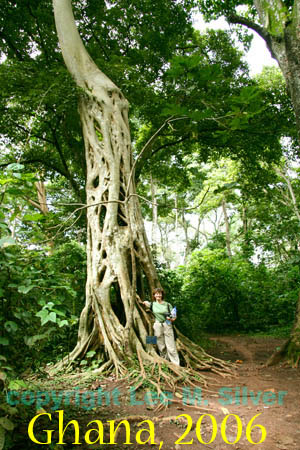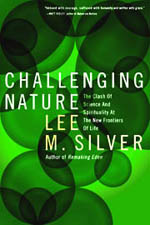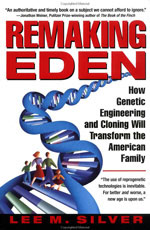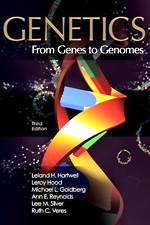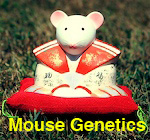|
published by Ecco/Harper Collins, 2006
|
|
Books
Presentations
Publications/Writings
Biography
Princeton Courses
|
 July 2006
Think only the religious right is anti-science? How about the spiritual left?
By Lee M. Silver From the book CHALLENGING
NATURE: The Clash of Science and Spirituality at the New Frontiers of Life. © 2006
by Lee M. Silver. Published by arrangement with HarperCollins Publishers. Further reading
When
the downward appendages hit the ground, their tips turn into roots which absorb larger amounts
of water from the mud and distribute it to the rest of the fig organism. The appendages themselves
now begin to expand sideways as they wrap themselves around the inner tree's trunk and major
branches. Eventually, the original tree is engulfed and disappears. The fig tree, with its
hidden hollow center, has killed and taken the place of the host that brought it to life.
A walk through the Amazon or any other rainforest in Central America, Asia or Africa will
provide you with abundant seemingly-static snapshots of each stage in this slow lethal process.
The strangler fig is not the exception but, rather, the rule of the jungle. Nearly every
tree is weighed down by vines of different kinds that grow to enormous sizes. Old vines are
themselves encrusted with other vines (which are themselves encrusted in moss and fungus).
Leaves are eaten by caterpillars or destroyed by leaf-cutting ants. External termite nests,
some larger than a person, hang from most older trees, themselves dotted with holes drilled
by birds to eat insects living within. Heavily weighted and weakened branches struggle for
survival, but eventually lose and break off.
It's not a good idea to wander off the
trail into the thick undergrowth, our guide Ramiro tells us; if you're not bitten by
a hidden venomous snake, your ankles will be attacked by marauding toxin-injecting ants,
or your exposed hands could rub up against poison-covered plants. It's fine to go swimming
in the river, he says, unless you're a menstruating woman or otherwise bleeding, in which
case, hordes of piranhas will eat your flesh - down to the bone if you don't get out
of the water while you can. Shallow lakes may be piranha-free, but they sprout leeches,
which attach to your limbs and suck out your blood. And the air itself is thick with
mosquitoes that stick a dirty needle-like proboscis through the exposed skin of any hot-blooded
animal they can find. Sometimes they carry a hitchhiking protozoan killer that slides
into blood cells to feed and reproduce wildly; the blood-borne offspring are picked up
by other biting mosquitoes, leaving you behind to suffer from malaria and possible death.
Everywhere you look, organisms suck the life out from organisms beneath them, just as
they are consumed by organisms on their own backs. Ramiro sums it up in one of the many
pithy aphorisms that cross his lips each day, "life in the jungle is fast and short." A
CAPRICIOUS MOTHER It is not just other living things that can cause pain and suffering among human beings and other animals. Mother Earth herself can be entirely capricious and uncaring. Once upon a time, there was a forested paradise as big as the United States with an abundance of trees, including giant shade-providing acacias and hackberries, and verdant green shrubbery and grasses.1,2 The drenching rains were heavier in the summer, although the humidity was high all year long. Dotting the countryside were freshwater lakes and rivers with an abundance of fish. Along the shores, and in the shallows, antelopes, giraffes, elephants, and hippopotamuses lingered. Occasionally lions and tigers came out of the forests and made their presence known. Sophisticated civilizations of people were here too, raising cattle, hunting wild game, and planting crops. On the rock walls, they painted pictures of themselves engaged in these and other common activities. Throughout this vast homeland, for hundreds of generations, life was good. Then, over the course
of a few centuries, the unthinkable happened.1 The old men noticed that summers were
now cooler and less rainy than in their childhood. The forests were becoming less
dense, and the lake shorelines had receded drastically. By the time the grandchildren
of the old men had grown up, the rains stopped completely, the lakes and rivers dried
up, and the verdant forests dissolved into a vast desert of sand covering up all
the villages. The gods must be angry, the people thought, because we did something
wrong. Most perished, but a few escaped through migration to the northern coast,
and others walked into an eastern river valley where water from a distant source
continued to flow. But kept alive in the stories told by mother to daughter and father
to son, from every subsequent generation to the next, even until our present day,
is the legend of God's eviction of disobedient human ancestors from the ancient Garden
of Eden. The foundation for the story just told is not a fairytale, or a warning
of the ecological devastation that will descend upon the earth if human beings
don't mend their ways. In its broadest strokes, these events really did unfold
- in the place we call the Sahara, now the largest and driest desert in the world.
Between 13,000 BC and 3,500 BC (an era named the African Humid Period by earth
scientists), the climate and ecology of the Sahara was radically different than
it is today.3 Ironically, for those not spiritually inclined, the blame for the
capricious climate can be put squarely on the shoulders of Jupiter - not the
god of gods, but the planet. The African Humid Period occurred when the
Northern hemisphere was both maximally tilted and maximally close to the
summer sun. Hotter air from the north forced sustained intense heat to cover
the Sahara at ground level. Hot air is less dense and rose more quickly sucking
heavy Atlantic rain clouds in its stead. Rain initiated the growth of green
life, which absorbed the sun's heat more effectively than bare ground. As
forests grew, they retained more heat and humidity, causing the rains to
become more intense. These Eden-like conditions lasted for almost
10,000 years. And then, as the earth continued to cycle through natural
changes in orbit and spin, the entire system collapsed. Less midday summer
sunlight in the North produced less heat, which led to weaker winds,
which led to less rain, which led to a thinning of the forest, which
led to a lower capacity for heat absorption, and so on.3 The Sahara forest
may have spiraled into an arid abyss in less than a century and a half,
a blink of the eye in geological terms, although long enough for some
people to migrate elsewhere.4 Circumstantial speculation suggests that
they could have brought their rich culture into the Nile Valley, setting
the stage for the sophisticated and long-lasting classical Egyptian civilization.
Whether the green Sahara was the inspirational source for the Biblical
Garden of Eden, we'll never know. What I find most remarkable about
this fascinating story is that it is practically unknown outside
specialized fields of climatology and anthropology, although scientists
have been writing about it for over 40 years. In contrast, everyone
knows about Ice Ages of the past, which are no more dramatic than
a green Sahara. The distinction seems to be that the Sahara's past
reveals a truth modern people don't want to hear: Mother Nature can
be a nasty bitch. Post-Christian western cultures, in particular,
want to believe in a Mother Nature that is feminine and benevolent,
always promoting her biosphere in positive ways. Life will thrive
unless, according to Greenpeace International, foolish human
beings persist in "... throwing the world's climate out
of its natural balance and into chaos."[my emphasis]5 The
assumption is that if we just left Mother Nature alone to follow
her own path, everything would turn out for the better. The retreat
of the glaciers, which led to the blossoming of human civilization,
is consistent with this view. A once-upon-a-time green Sahara
wiped out by natural - not human-induced - climate change doesn't
fit the whole-earth spiritual picture, and does not become incorporated
into the public consciousness. What if biotechnology could
be deployed to sustain and expand a self-regenerating Sahara
forest that could benefit humankind in many ways? Ecological
alterations of such large magnitude - whether natural or
human-induced - always have effects on other regions of the
globe. Computer modeling will help future societies determine
whether a green Sahara would be better or not for humankind
and the biosphere as a whole. The ultimate question, though,
is who should we trust to make such future choices: global
society or Mother Nature? Mother Nature, without our help,
turned gigantic vibrant ecosystems into lifeless deserts.
Mother Nature, without our help, "ruined ancient civilizations
and socio-economic systems."6 Mother Nature, without
our help, covered Canada in mile-deep glaciers, and she would
certainly do it again if all human industry disappeared. BUILDING
THE METAPHOR IN OUR AGE Who or what benefits from the massive and perpetual orgy of organic churning and decimation that is Mother Nature? Certainly not the individual victims; which includes the vast majority of plants and animals in the rainforest and everywhere else. Few survive long enough to die "naturally" from old age. Even many of the so-called "top-of-the-food chain" predators like the elusive Amazonian jaguar, that walked past our tent one night, are done-in by tiny parasites or same-species competitors. What most people in Western society believe today is that the benefit accrues to the "ecosystem as a whole." You don't have to look far to discover how this concept
is taught and reinforced from early childhood. The first page of the first chapter
of the Prentice Hall Ecology textbook used by my son's 5th grade class focuses
on a tender story of ants and aphids opposite a full-page picture of their peaceful
lives together: "Upon reaching the aphid, the ant begins to stroke
the smaller insect with its feelers. The aphid responds by releasing a drop
of a sugary substance called honeydew. The ant eagerly licks up the honeydew.
Then the ant gently picks up the aphid in its jaws and carries it to another
leaf. There the aphid is added to a 'herd' tended by ants. The ants take
care of the aphids in exchange for meals of honeydew." 7 Educated
adults are also bombarded with a holistic image of life on earth. In
1970, the scientist James Lovelock used an understanding of atmospheric
chemistry to argue for the recognition of the biosphere as a "unified
self-regulated organism," christened Gaia (from the earth-mother
goddess of Greek mythology) with component parts that work together symbiotically
for the good of the whole. If Gaia is used simply as a value-neutral
metaphor to describe the entire complex network of symbiotic interactions
over the history of our planet, no evolutionary biologist or ecologist
would complain. But when Gaia moves from the science sphere to the public
sphere, it becomes translated into something entirely different. How
does an emotional attachment to the spirit of Mother Nature color
one's views concerning the morality of using biotechnology to genetically
alter plants and animals for the benefit of humankind, or the biosphere
itself? The problem begins with the popular meaning of the word symbiosis. Scientists use the word broadly to describe any biological interaction between species that provides benefit to one or both. Parasitism - in which individuals from one species gain a benefit at the expense of another's life or longevity - is, by far, the most common form of symbiosis. To the public, however, symbiosis is considered to be a synonym for community and cooperation among individuals.8 And so when Lynn Margulis, the most important scientist-popularizer of Gaia, titles her book on the subject Symbiotic Planet, the take-home message seems clear: all of the organisms on earth cooperate unconsciously to keep alive a unified Gaia or Mother Nature, who is more conscious than her individual plant and animal parts. To
get a sense of how common this vision is at a university not known for attracting
students with counter-culture beliefs, I placed the following question on
an anonymous survey of Princeton undergraduates: Can a species, an ecosystem
or another grouping of multiple organisms have a unified spiritual soul?
The possible answers were: (a) No, it makes no sense to say that a system
of multiple organisms has a spiritual soul; (b) Yes, some systems of multiple
organisms (e.g. species, ecosystem, or biosphere) can have a unified spiritual
soul; or (c) I am not sure whether systems of multiple organisms can have
a spiritual soul. Multi-organismal spirits are incompatible with both
Christianity (the religion with which over 85% of Princeton students
self-identify) as well as the science instruction these students received
even before they were admitted to my university. And yet, only 48% of
female students and 61% of men felt confident enough to reject the idea
outright.9 Among female humanities majors, the proportion dropped to
36%. The results (surprising to me) imply that even in America, where
traditional Christianity is still a powerful force, highly educated young
people are attracted to the post-Christian worldview of a unified "Mother
Nature" that is more than a metaphor. Can we really determine
- from our perspective as potential component parts - whether the
whole biosphere, or even an isolated ecosystem, behaves like a single
organism? Is it possible that each species in the rainforest really
is analogous to a nerve cell or ant whose work and activities serve
the goal of something that only comes into existence through the
proper functioning of the much larger whole? One way to approach
this question is by comparing the actual design of ecosystem networks
with the design of other types of biological networks. Three
wholly different levels of biological organization are observed
in nature. At the bottom, specific interactions among genes and
protein molecules give rise to the emergent property of dynamic
life within each single cell. In network language, each type
of molecule can be viewed as a node and each type of molecular
interaction as a connection. Animals are also made up of cells,
but a higher level of organismal life emerges when multiple cells
interact with each other to form a brain that produces a mind
of some kind. In network language, brain cells are nodes, and
synapses are connections. Finally, the highest level of biological
organization occurs in an ecosystem where species can be viewed
as nodes, and symbiotic relationships are represented as connections. In
2002, the Israeli scientist Uri Alon and his colleagues at
the Weizmann Institute performed a computer analysis of the
architecture underlying 10 unrelated biological networks,
including two species of cells (from different phylogenetic
kingdoms), one completely described brain with 252 neurons,
and seven very different ecosystems.10 Although the physical
meanings of nodes and connections are entirely different
in cells and brains, Alon found that cell networks and the
brain network have the same architectural design which optimizes
the flow of information among component parts. In other words,
in all three organismal cases, components really are working
for the good of the "whole" organism. The
architectures of all seven ecosystems are similar to
each other, yet strikingly different from the biological
networks found in cells and brains. In each eco-case,
information flow among component parts (individuals of
different species) is suppressed to a greater extent
than expected from chance alone. This empirical result
makes sense in theoretical terms because when every organism
is a potential victim of a new parasite or predator species,
it pays not to advertise yourself. There are exceptions,
of course, in isolated instances of mutually beneficial
symbiosis. But the clear implication is that different
species do not work for the good of the whole community. In
fact, the natural world hews closer than any modern
democracy to Adam Smith's laissez-faire model of
human economic activity. Nature has no central authority
of any kind to which species are beholden. Organisms
don't abide by any rules of competition, and no safety
net exists for losers. Through rational analysis
alone, anyone able to accept the idea that a complex
and "vibrant" economy can evolve in the
absence of a unified spirit should also be willing
to accept the idea that complex ecosystems can evolve
in the absence of any overarching multi-organismal
spirit of any kind. Yet, at an emotional rather than
a rational level, non-scientists and scientists alike
can sometimes be led astray by the holistic conceptualization
of Mother Nature's creatures living primarily in
peaceful harmony with each other. If neither
scientific theory nor scientific facts provide
support for a coordinated Gaia super-organism,
we are faced with two questions. First, whose
interests are organisms working for if not Gaia?
Second, how does an emotional attachment to the
spirit of Mother Nature color one's views concerning
the morality of using biotechnology to genetically
alter plants and animals for the benefit of humankind,
or the biosphere itself?
References
1. P. deMenocal et al., "Abrupt onset and termination of the African
Humid Period: Rapid climate responses to gradual insolation forcing," Quaternary
Sci Rev, 19:347-61, 2000;
2. R. Kunzig, "Memories of a lush Sahara," U.S. News & World Report, Oct. 13, 2003. 3. M. Claussen, "On multiple solutions of the atmosphere-vegetation system in present-day climate," Global Change Biol 4:549-59, 1998. 4. M. Claussen et al., "Simulation of an abrupt change in Saharan vegetation in the mid-holocene," Geophys Res Lett, 26: 2037-40, 1999. 5. Greenpeace, The Cause (accessed on July 12, 2004, www.greenpeace.org/international_en/campaigns/intro?campaign_id=3993). 6. C. Arthur, "Tilt of earth's axis turned Sahara into a desert," The Independent, Sept. 8, 1999. 7. A. Maton, Ecology: Earth's Living Resources, Annotated teacher's ed., Englewood Cliffs, NJ: Prentice Hall, 1993. 8. The dictionary available with the 2001 Macintosh version of Microsoft Word provides two definitions of symbiosis: (1) a close association of animals or plants that is often, but not always, of mutual benefit; (2) a cooperative, mutually beneficial relationship between two people or groups. The Oxford American dictionary defines symbiosis as an "interaction between two different organisms living in close physical association, typically to the advantage of both." 9. The 335 students included in the survey were classified by gender (152 males, 155 females), and by area of major (118 science, 83 humanities, 84 social science, and 50 other). In answer to this particular question on multi-organismal souls, 16% of both males and females responded yes (B), 23% of men and 35% of women responded "I am not sure" (C), and 61% of men responded no (A). 10. Detailed schematic diagrams of the molecules and interactions within two unrelated species of single cell organisms have been determined: yeast with 686 nodes and the human gut bacterium E. coli with 424 nodes. To date, the complete architecture of a brain has been determined in only one species: the one millimeter long soil worm with 252 neuron nodes. Network diagrams have been determined for seven distinct ecosystems including both land and water habitats. R. Milo et al., "Network motifs: Simple building blocks of complex networks," Science, 298:824-7, 2002. |
Hover over or click on books to order from Amazon.com
|

